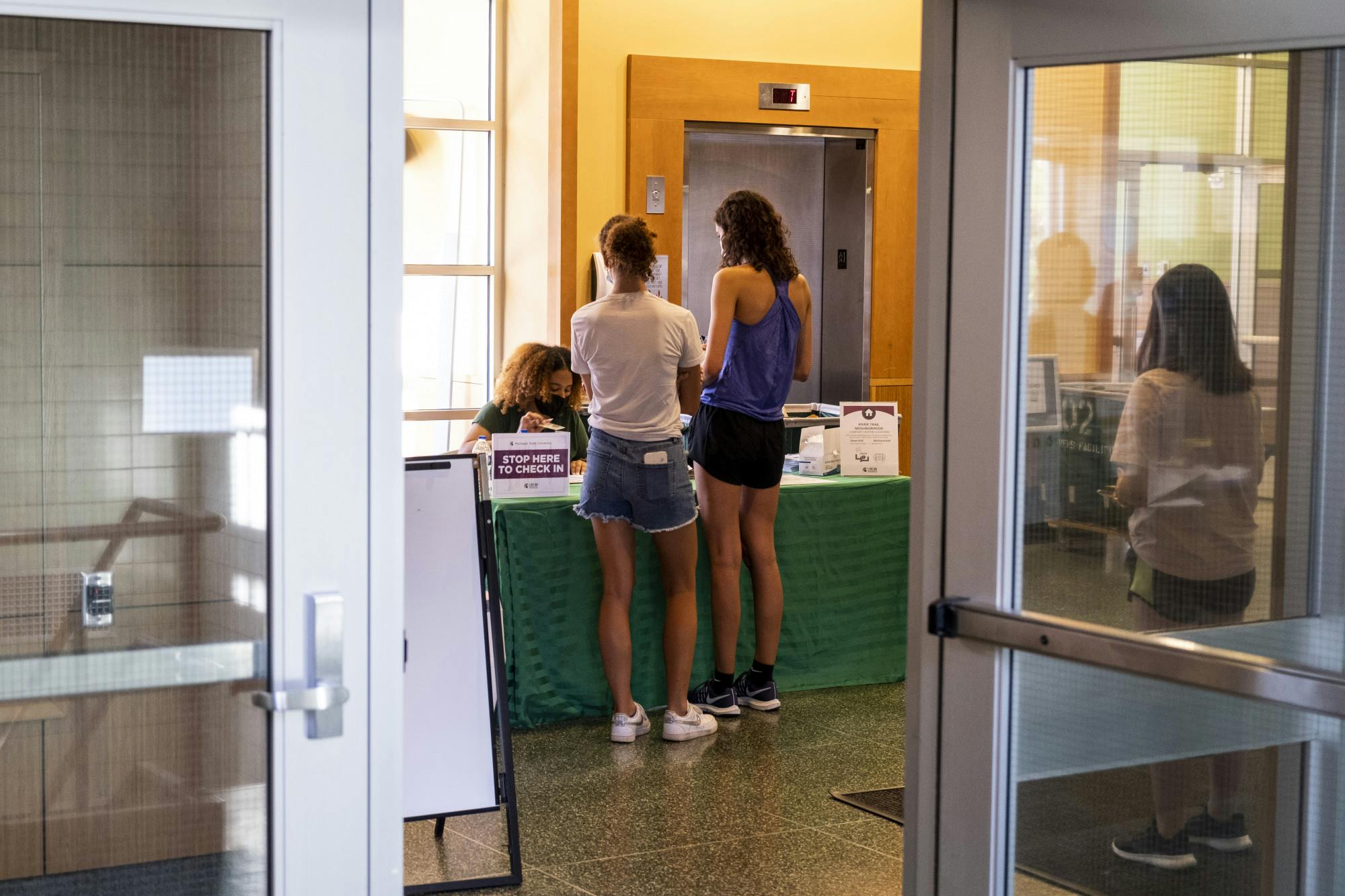For the first time since the 1980s, this year’s entering fall class will be required to live on-campus for two years instead of one at Michigan State.
MSU cited an on-campus study which showed a 2.5% increase in graduation rates in students who lived on-campus in comparison to their off-campus counterparts as the motivation behind the second-year live-on reinstatement.
Despite the promised benefits, some students are less than enthusiastic about the live-on requirement.
“I don't think you should be coerced to do a second year,” economics sophomore Jacob Starner said. “If it was a really good experience, they should let market forces determine whether people want to dorm. If it is good service and people enjoy living in the dorm, you will see that reflected in how many people sign up willingly next year, rather than being coerced to do it.”
According to MSU, the requirement will help students overcome the “sophomore slump,” a phenomenon associated with feelings of dissatisfaction and uncertainty that can be attributed to fewer support services and programs. The university believes by living on campus, sophomores will be provided with greater access to resources and activities that increase their academic success.
MSU will be pairing the requirement with increased support for students through Spartan Compass and Spartan Navigator. Student success programs designed by the university will focus on academic engagement, major and career exploration, knowledge around diversity and inclusion, wellness and serving in larger community settings.
In addition to increasing student success, MSU said the reinstatement will alleviate the stress of freshmen having to arrange off-campus living within their first weeks on campus.
Despite having a fair dorm experience, Starner doesn't think the requirement is necessary.
"I don't think dorms are necessarily bad institutions,” Starner said. “If they're regulated properly, they can be good. I think one year is fine. ... One-year requirement is fine. No one is arguing that. But, two seems like a cash grab and probably is a cash grab."
While some students have strong opinions about the dorm living, others are more indifferent.
"I enjoy my dorm experience being in close proximity to people, dining options and the suite-style living," computer science freshman Bruno Budelmann said. "I don’t really have a strong opinion about the two-year live-on requirement, since I don’t dislike dorm living, but I am excited to live off-campus when I am able to."
Dorm life has certainly looked different this year. MSU is operating through a severe staffing shortage, as well as other various COVID-19 limitations. The limited dining options seem to have the most impact on students this semester.
"The limited dining has affected me since I usually eat at Case,” Budelmann said. “Since a lot of the other dining halls have been closed, Case becomes very busy, especially around dinner time."
Senior Communications Director Bethany Balks reassured students concerned about the extensive staffing shortages, and consequential limited dining facilities. She said MSU is working as quickly as possible to return to normal operations.
“When the two-year live-on requirement was reinstated, there wasn’t the anticipation that we would have some of those things with having dining halls not fully open, having not all of our service centers open, and that is something we’re certainly looking to get back to a new normal as quickly as possible," Balks said.
Students also expressed concern about how the university will house the 1,300 additional on-campus students the requirement will bring. They also question the safety of keeping so many students in such close quarters.
Deputy spokesperson Dan Olsen said MSU saw the largest incoming class in history this fall. The class of 2025 consists of more students than ever before, and with the requirement, a large majority of these students will be living on campus again.
There are exceptions to the live-on requirement — married students, students with dependents, veterans with one or more years of active service, students who will be 20 years old by the first day of fall semester classes, students living with a parent or guardian within 40 miles of campus and local students who are taking six or fewer semester credits.
MSU assures that they have the necessary space to house the increased volume of students – MSU's occupancy capacity is 18,203 and MSU estimates that around 16,000 first- and second-year students will be living on campus.
MSU will be more intentional in building first- and second-year communities in the 2022-23 academic school year as it will be the first year housing will be required for first and second-year students. More information about the housing will become public by the end of the fall semester.
Support student media!
Please consider donating to The State News and help fund the future of journalism.
Editor's note: This story was modified to correct the exceptions to the live-on requirement.
This story is a part of our Fall Housing Guide. View the full issue here.
Discussion
Share and discuss “MSU’s freshman class will be the first held to the two-year live-on requirement” on social media.







